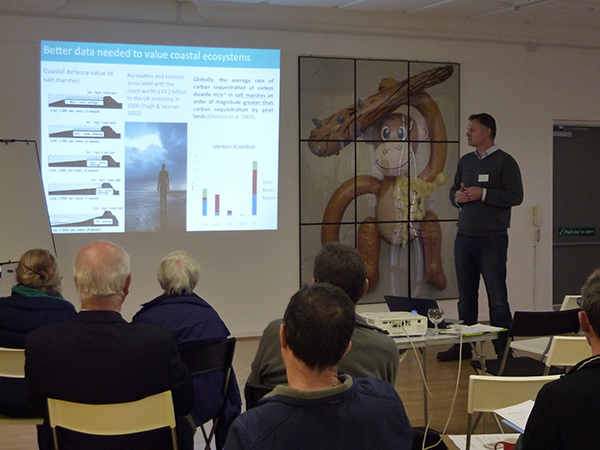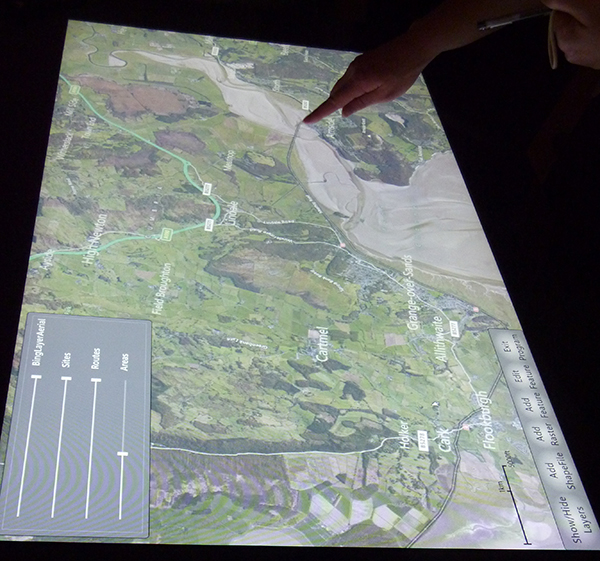On 8 May, in collaboration with the Morecambe Bay Partnership, CBESS team members from the University of St Andrews, the British Trust for Ornithology (BTO), the Royal Society for the Protection of Birds (RSPB) and the Centre for Hydrology and Ecology (CEH) were in Barrow-in-Furness to host a participatory stakeholder workshop for local recreational users.
One of the goals of the CBESS project is to understand the relationship between biodiversity and cultural benefits within coastal mudflat and salt marsh ecosystems. Recreational activity is one of the most important cultural benefits that coasts provide, and is increasing across the UK as people make the most of the increased leisure time and higher incomes of modern lifestyles. In fact, the 2011 UK National Ecosystem Assessment identifies tourism (proxy valued at £17 billion per annum in seaside visits in Great Britain) and recreation (cultural) and coastal defence (provisioning) as the services of the greatest value provided by coastal ecosystems.
As such, CBESS is interested in understanding the preferences of recreational users and how these relate to biodiversity. Investigating the link between biodiversity and recreational use of coastal areas raises some interesting questions:
- What factors are important for recreational users in deciding where to undertake their activity?
- Is biodiversity important for recreational users?
- At what point would a decline in biodiversity become a significant factor for recreational users?

17 stakeholders attended from 14 different recreational sectors, including bird watching, cycling, sailing, windsurfing, running, fishing, water-skiing, walking, photography and diving. The group completed questionnaires about which sites around Morecambe Bay were of particular importance to their sector, what makes those locations important (site characteristics, senses, emotional attachment, beauty etc.), along with their general thoughts on nature. They also used touch-tables to map exactly where people from their recreational sector undertake their activity, providing further information on frequency, timings and numbers of people involved in the activity to give us a comprehensive picture of recreational activity in the Bay area.

We were keen to find out how bird biodiversity in particular is valued by recreational users, as we have very good datasets for birds. Lucy Wright from BTO delivered an excellent presentation on birds in the area and used a clicker voting system to participants’ input into how they viewed birds and what influence bird biodiversity has on their decisions to undertake their particular recreational activity.
The workshop has provided us with some very interesting data that we are now in the process of analysing, alongside corresponding data collected at the Essex socio-economic workshop last year. By exploring the data from these two regions, we can start to investigate the relationship between biodiversity and recreation in saltmarsh and mudflat ecosystems. We hope to have some results coming in over the next month or so!
